Organelles and Their Functions Worksheet
Are you a student or educator searching for a comprehensive resource that covers organelles and their functions? Look no further! Our Organelles and Their Functions Worksheet is the perfect tool for you. Designed with efficiency in mind, this worksheet is tailored to help students deepen their understanding of cell biology and the various roles of organelles within a cell. Whether you're studying for an exam or looking to reinforce your knowledge, this worksheet provides a clear and concise overview of each organelle's function, allowing you to grasp the material with ease.
Table of Images 👆
- Cell Organelles and Their Functions Worksheet
- Cell Organelles Worksheet Answers
- Cell Organelles and Their Functions Chart
- Cell Organelle Quiz Worksheet
- Cell Organelles Structure and Function
- Cell Organelles Worksheet Answer Key
- Cell Organelles and Functions
- Cell Structure and Function Worksheets Answer Key
- Cell Organelles Structure and Function Chart
- Animal Cell Organelles Functions
- Plant Cell Organelles and Their Functions
- Cell Structure and Function Worksheet Answers
- Cells and Their Organelles Worksheet Answers
More Other Worksheets
Kindergarten Worksheet My RoomSpanish Verb Worksheets
Cooking Vocabulary Worksheet
DNA Code Worksheet
Meiosis Worksheet Answer Key
Art Handouts and Worksheets
7 Elements of Art Worksheets
All Amendment Worksheet
Symmetry Art Worksheets
Daily Meal Planning Worksheet
What is the function of the nucleus?
The nucleus is the control center of a cell, responsible for storing and protecting the genetic material (DNA) that contains instructions for the cell's functions and characteristics. It regulates gene expression, coordinates cellular activities, and plays a vital role in cell division.
What is the role of the endoplasmic reticulum?
The endoplasmic reticulum (ER) plays a crucial role in the synthesis, folding, modification, and transport of proteins and lipids in eukaryotic cells. It consists of two types: rough ER, which is studded with ribosomes and is involved in protein synthesis, and smooth ER, which is important for lipid metabolism and detoxification of drugs. The ER also helps in the proper folding of proteins and the transport of these molecules to various cellular destinations.
What is the function of the Golgi apparatus?
The Golgi apparatus functions as a processing and packaging organelle within the cell. It receives proteins and lipids from the endoplasmic reticulum, modifies them by adding sugars and other molecules, and then sorts and packages them into vesicles for transport to various destinations within and outside of the cell.
What is the purpose of mitochondria?
The purpose of mitochondria is to generate energy for the cell through the process of cellular respiration, producing adenosine triphosphate (ATP) which is used as a source of chemical energy for various cellular functions. Mitochondria are often referred to as the powerhouse of the cell due to their vital role in energy production.
What are the functions of lysosomes?
Lysosomes function primarily to break down and recycle cellular waste and debris through the process of autophagy and phagocytosis, as well as to digest engulfed pathogens and other foreign substances in a process called heterophagy. Additionally, lysosomes are involved in various cellular processes such as cell signaling, energy metabolism, and maintaining cellular homeostasis by acting as the recycling centers of the cell.
What role does the cytoskeleton play in cells?
The cytoskeleton plays a crucial role in cells by providing structural support, maintaining cell shape, enabling cell motility, and facilitating intracellular transport. It consists of protein filaments such as microtubules, actin filaments, and intermediate filaments that help in cell division, organelle movement, and cell signaling. Additionally, the cytoskeleton is also involved in cell adhesion, cell migration, and cellular responses to mechanical forces. Overall, the cytoskeleton is essential for the overall organization and function of cells.
What is the function of ribosomes?
Ribosomes are responsible for protein synthesis within the cell. They read the messenger RNA (mRNA) and use it as a template to construct proteins by linking together amino acids in the order specified by the mRNA. This process is essential for cell growth, repair, and functioning, making ribosomes crucial for the overall survival and function of the cell.
What are the functions of the chloroplasts?
Chloroplasts are responsible for photosynthesis in plant cells, capturing sunlight and converting it into energy in the form of ATP and producing glucose from carbon dioxide and water. They also help in the synthesis of organic compounds, storage of starch, and the production of amino acids and lipids. Chloroplasts contain chlorophyll, which gives them their green color and is essential for absorbing light energy during photosynthesis. Additionally, they play a role in regulating plant growth and development by responding to environmental cues such as light conditions.
How do vacuoles contribute to cell function?
Vacuoles contribute to cell function by storing nutrients, waste products, and ions, aiding in the maintenance of turgor pressure, digestion and breakdown of macromolecules, and managing cellular pH balance. Additionally, vacuoles can also store pigments in plant cells and help regulate cell growth and development through the storage and release of molecules.
What is the role of the cell membrane?
The cell membrane acts as a protective barrier that surrounds and encloses the contents of a cell, maintaining the cell's internal environment and regulating the passage of substances in and out of the cell. It controls the movement of molecules like nutrients, ions, and waste products, while also providing structural support and enabling communication with other cells. Additionally, the cell membrane plays a crucial role in cell recognition and signaling processes.
Have something to share?
Who is Worksheeto?
At Worksheeto, we are committed to delivering an extensive and varied portfolio of superior quality worksheets, designed to address the educational demands of students, educators, and parents.





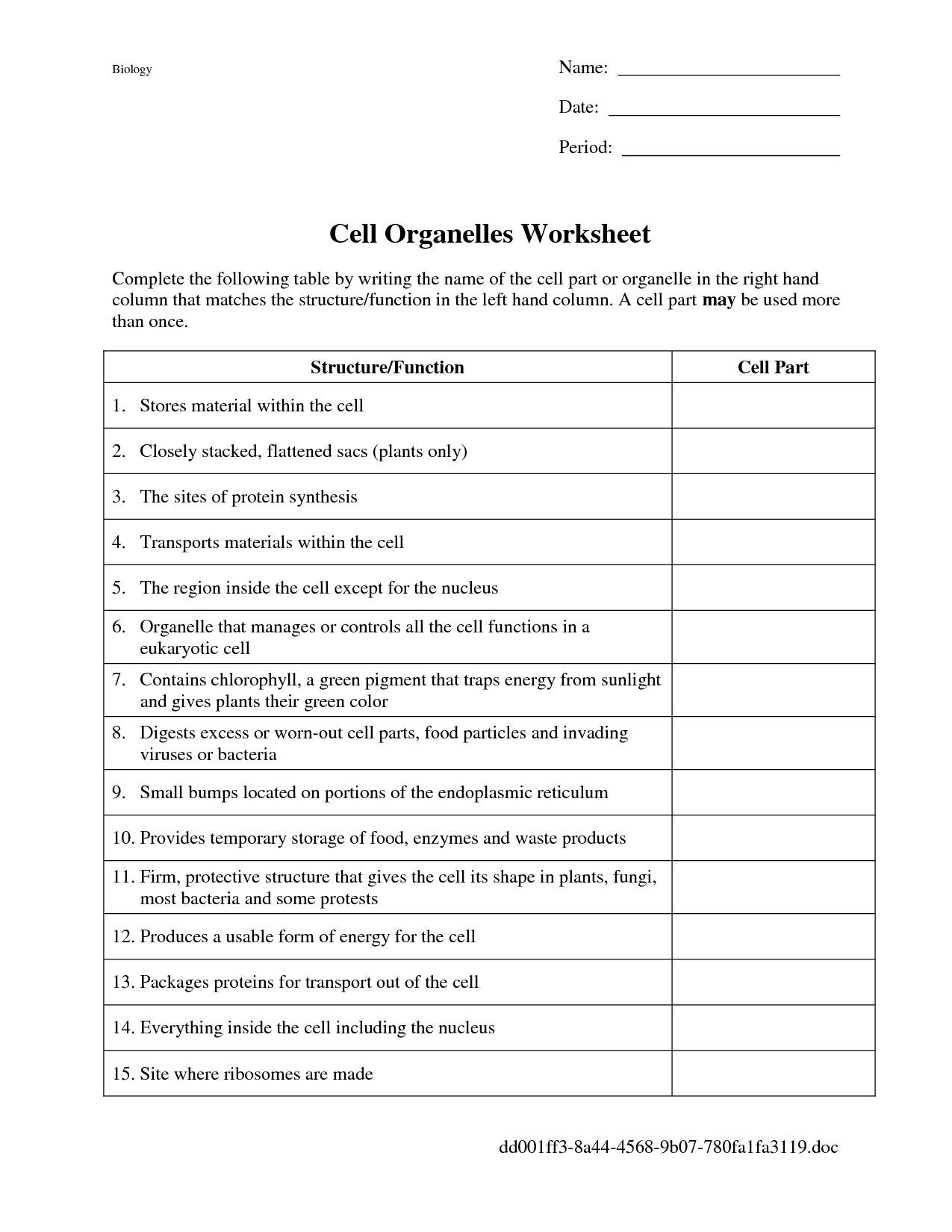
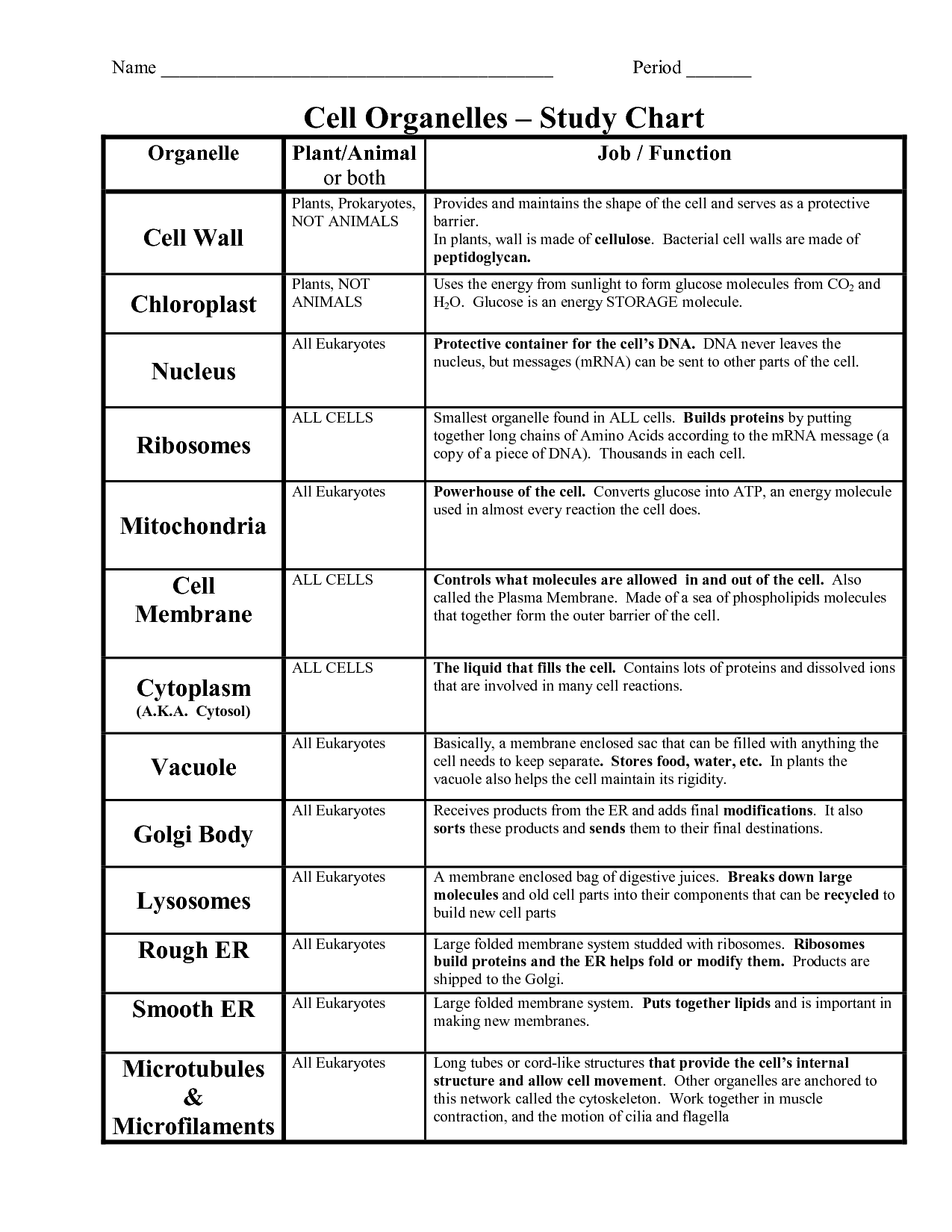
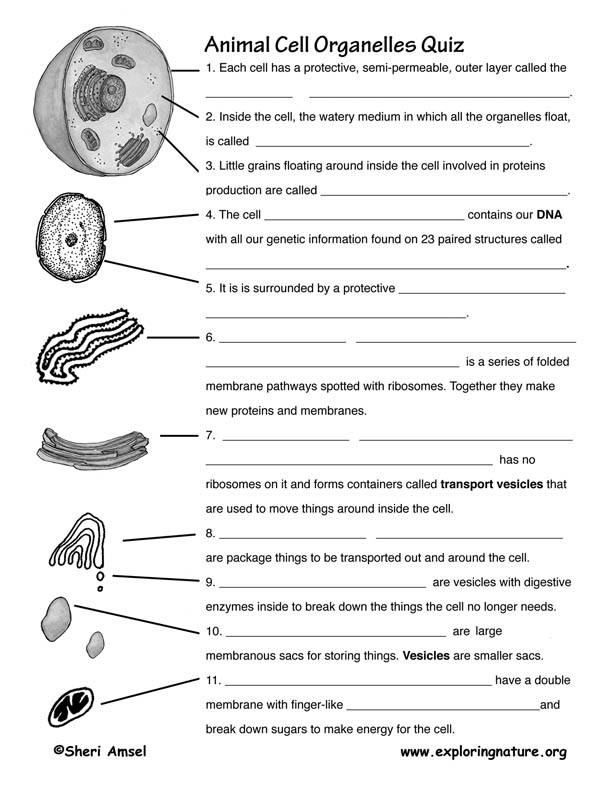
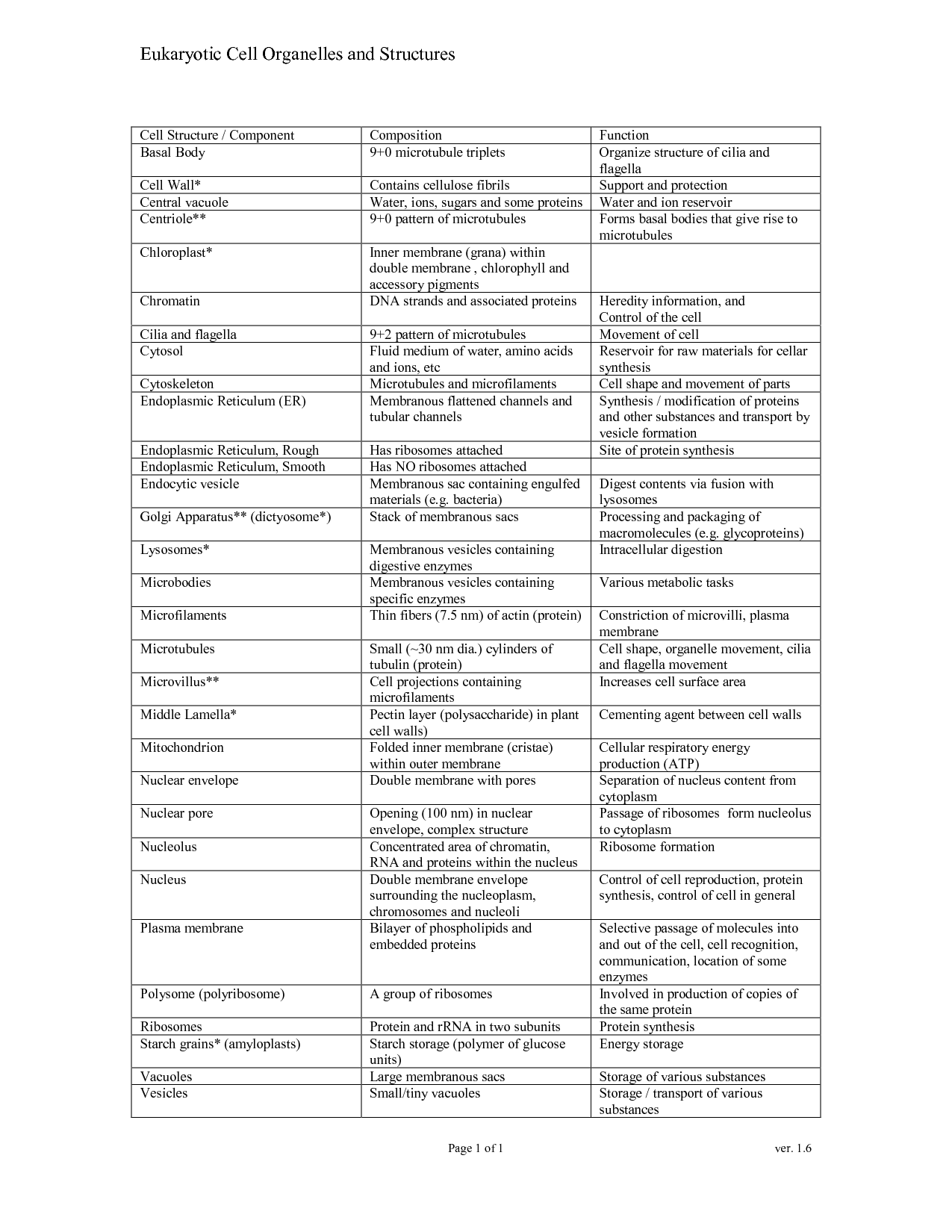
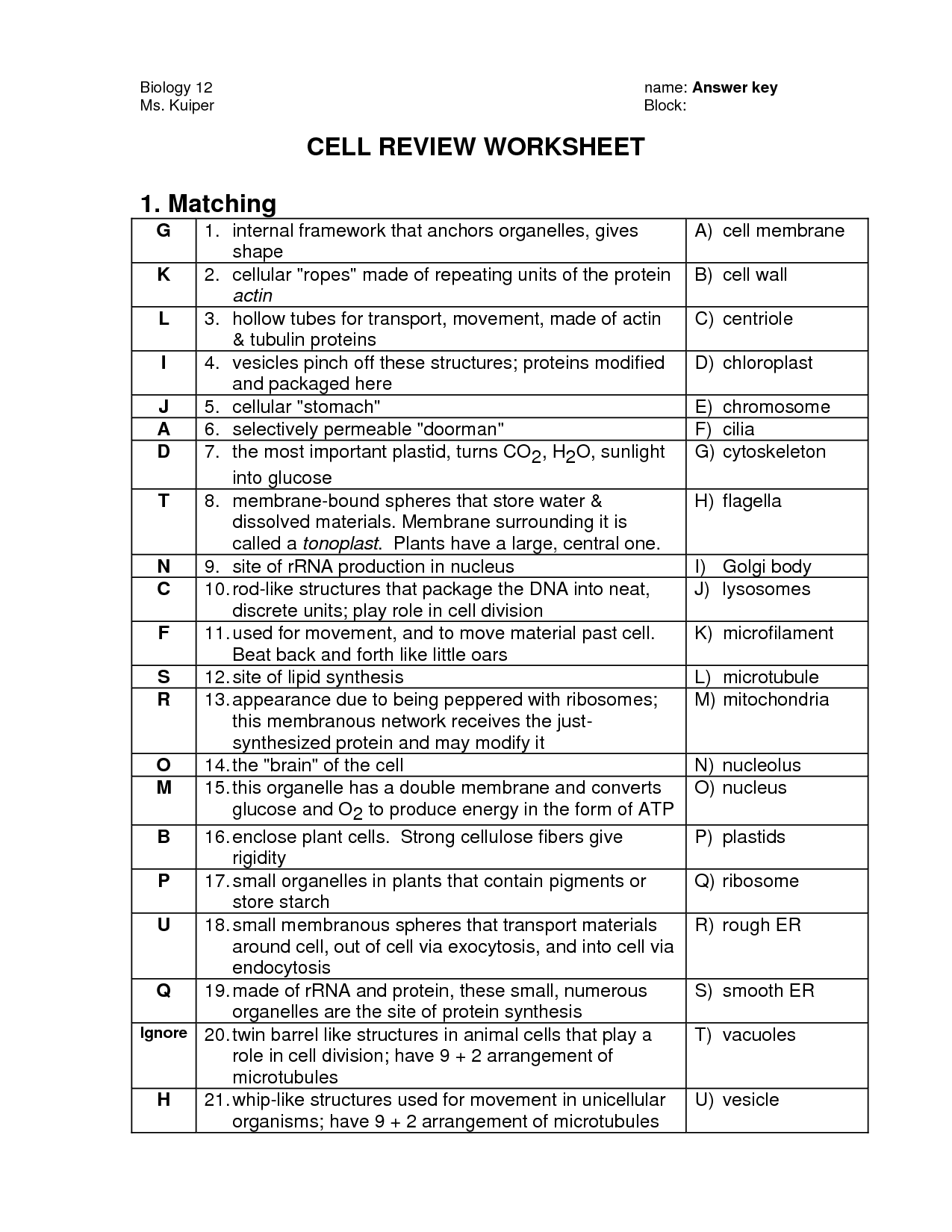
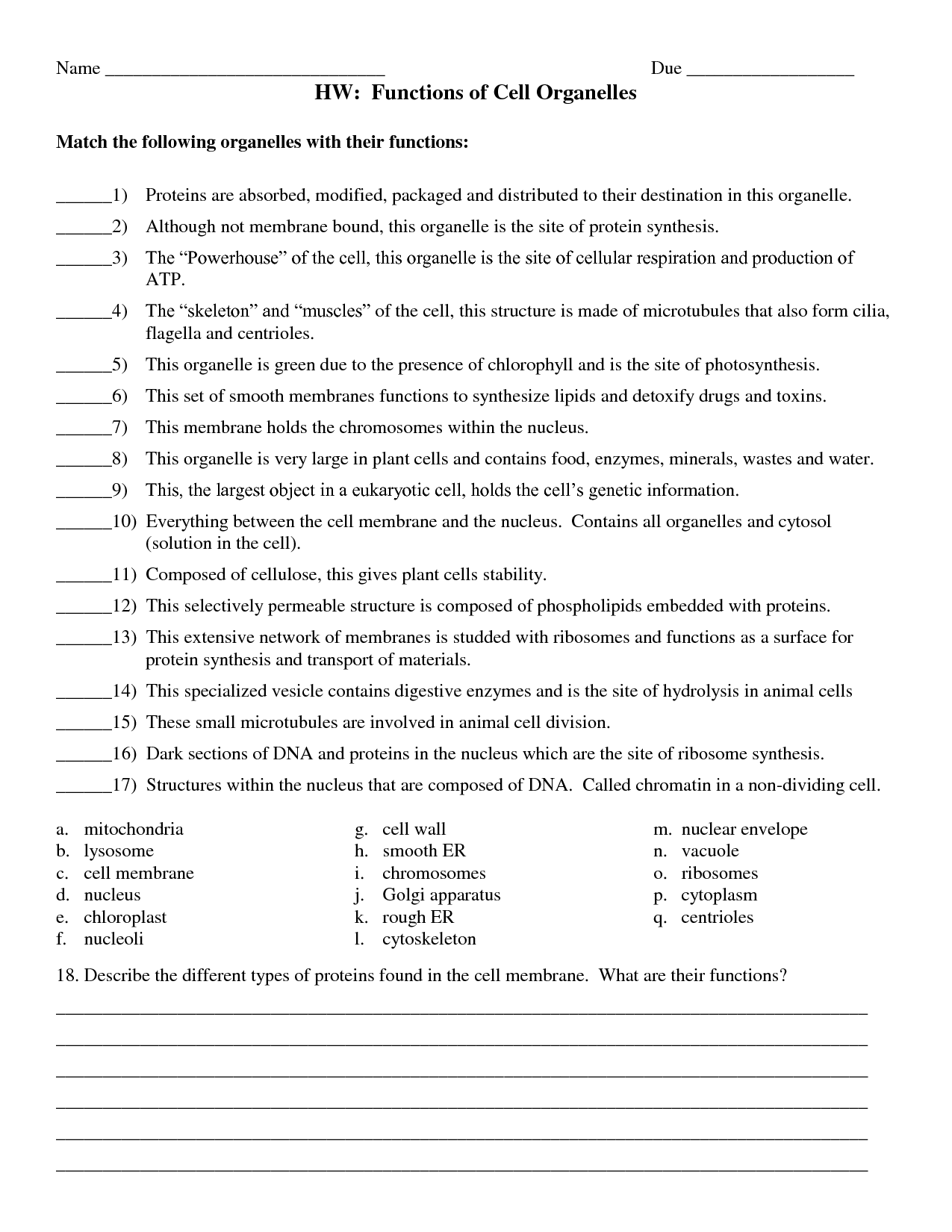

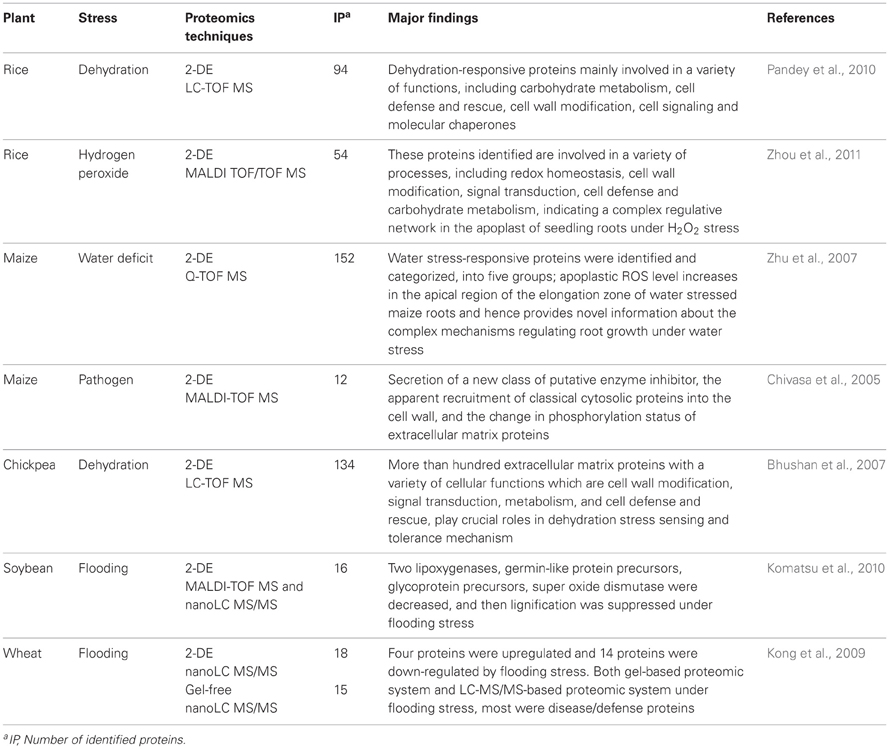
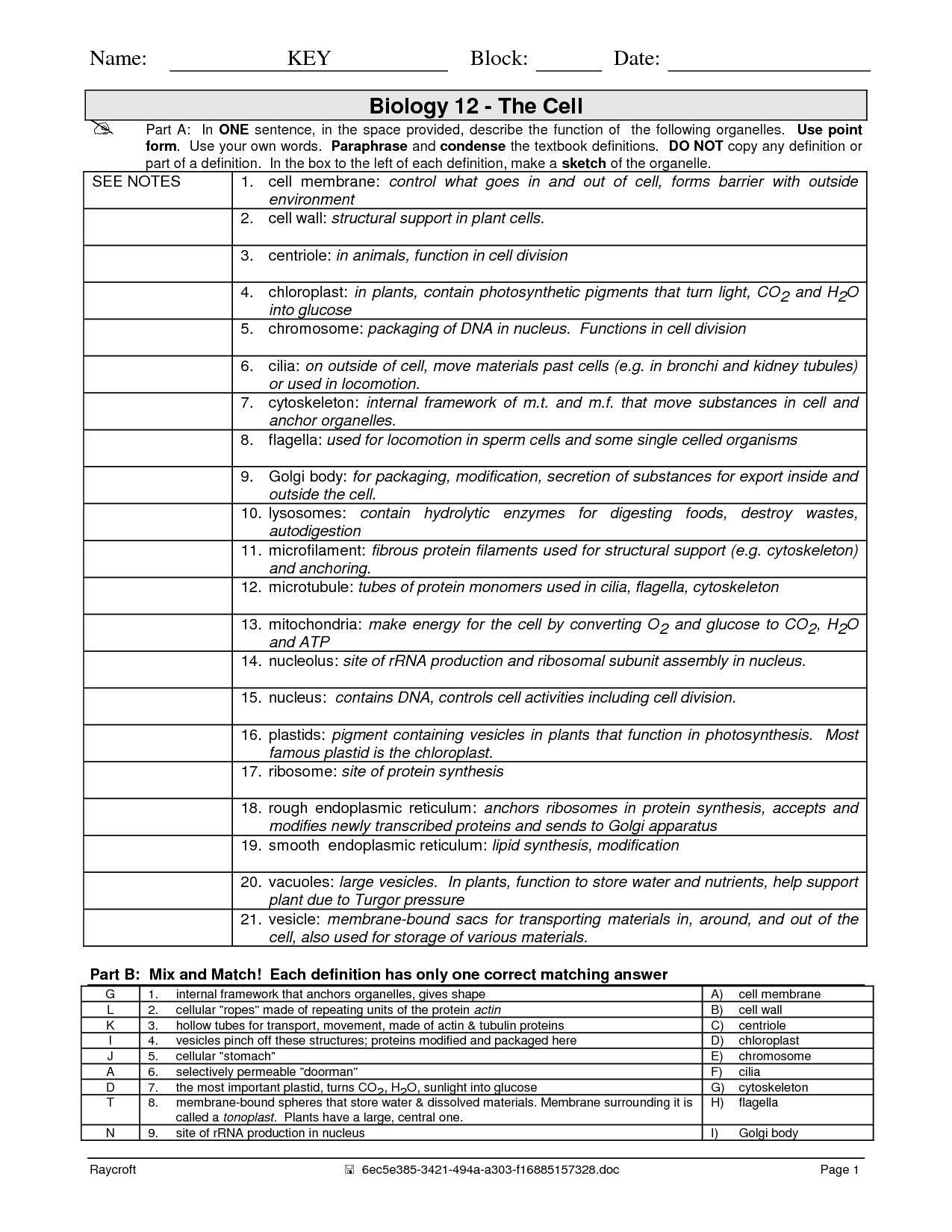
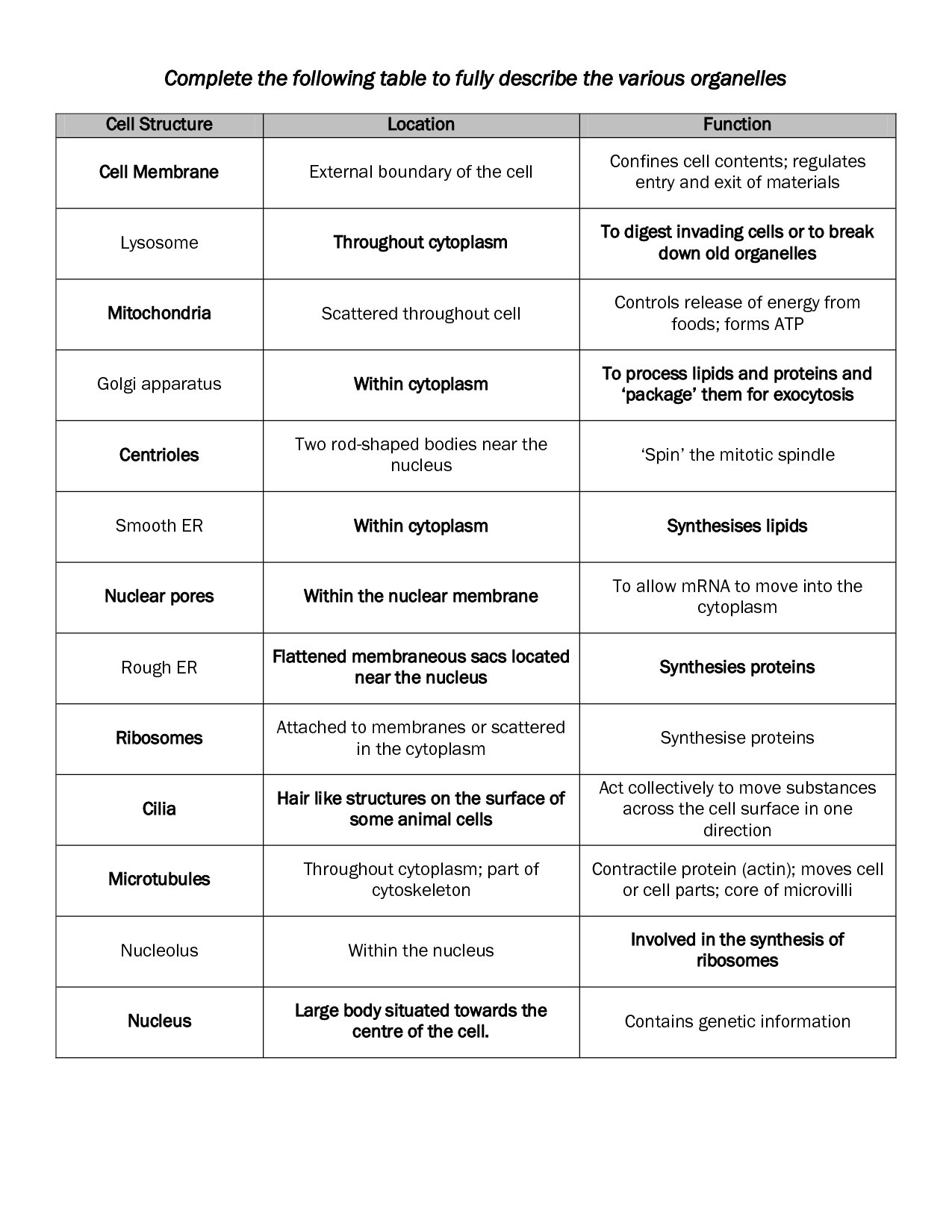
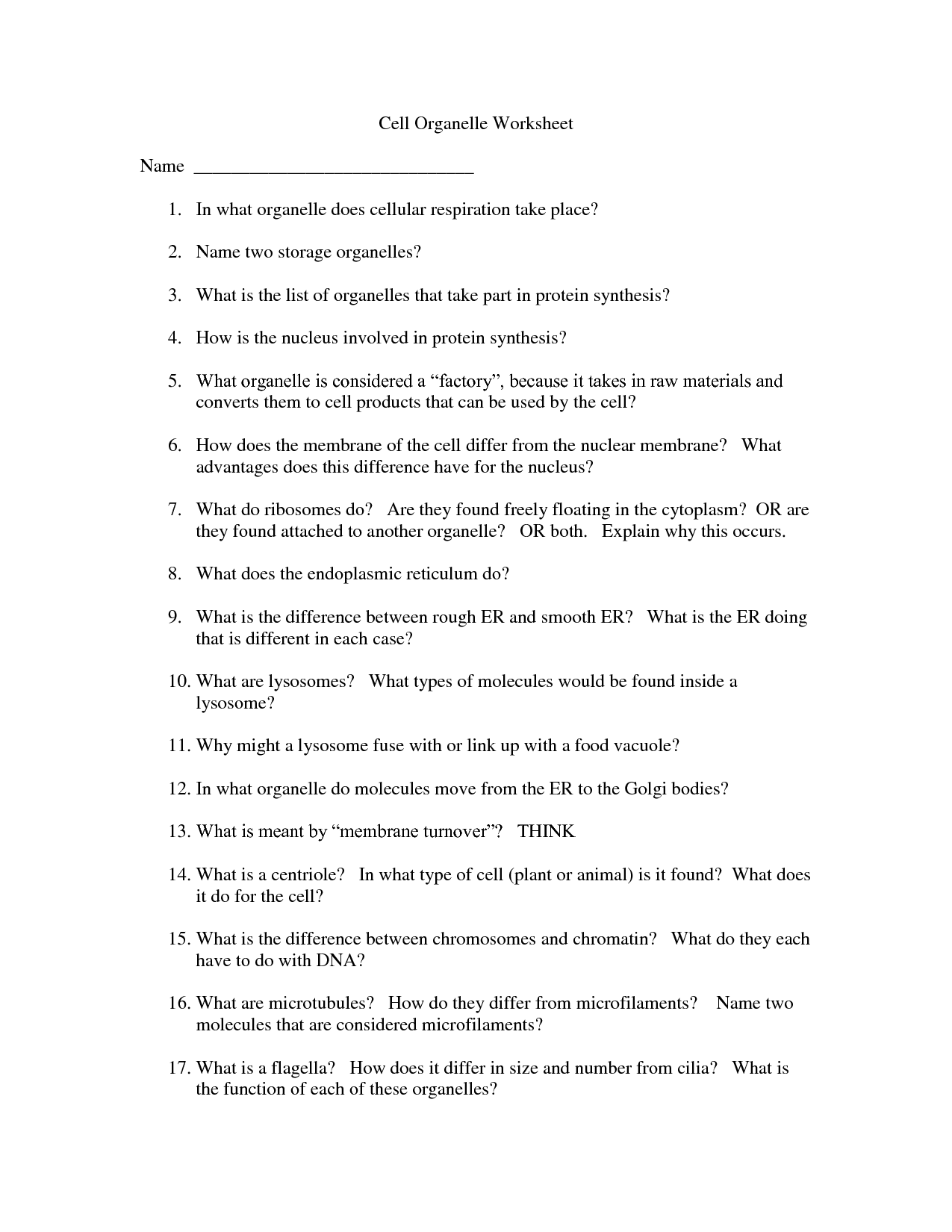
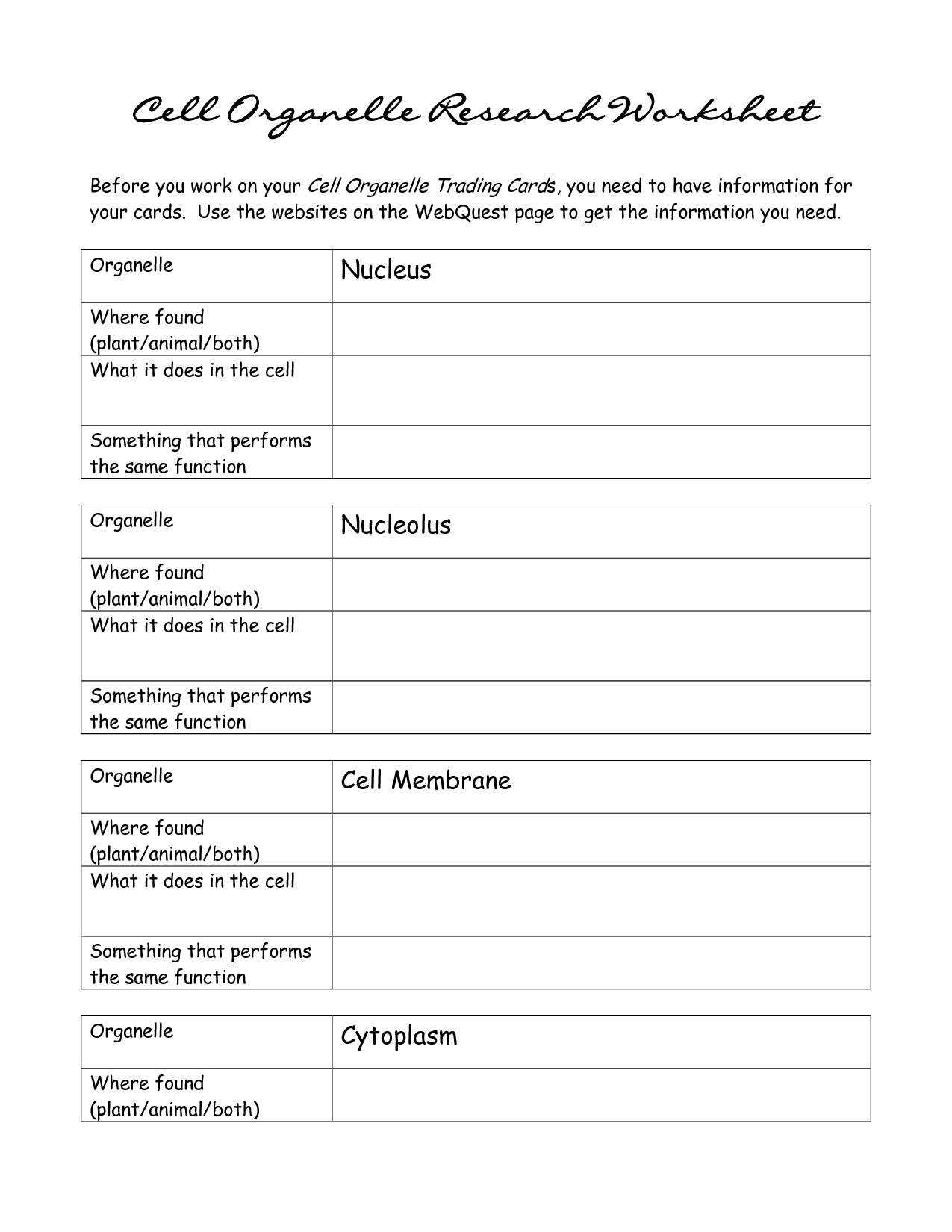
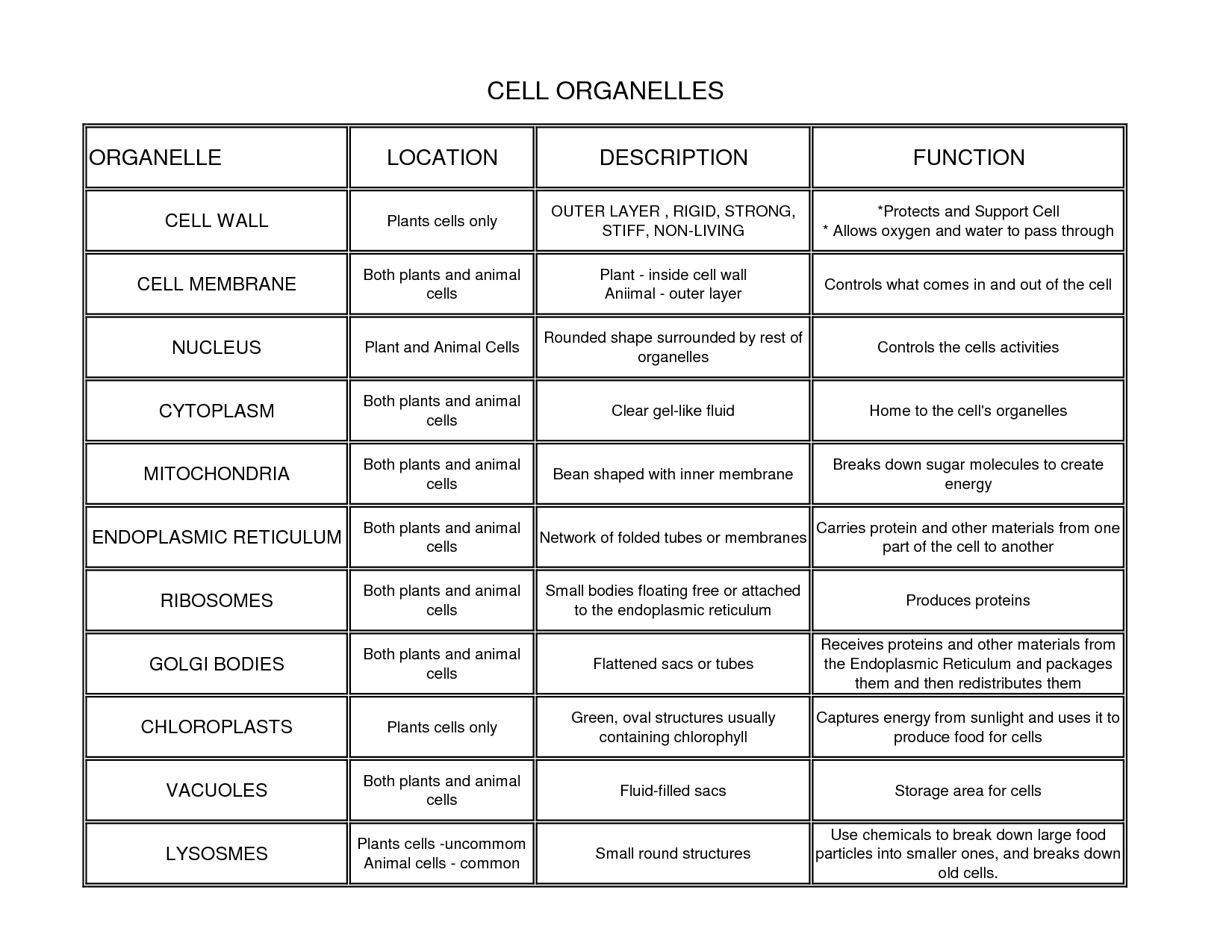
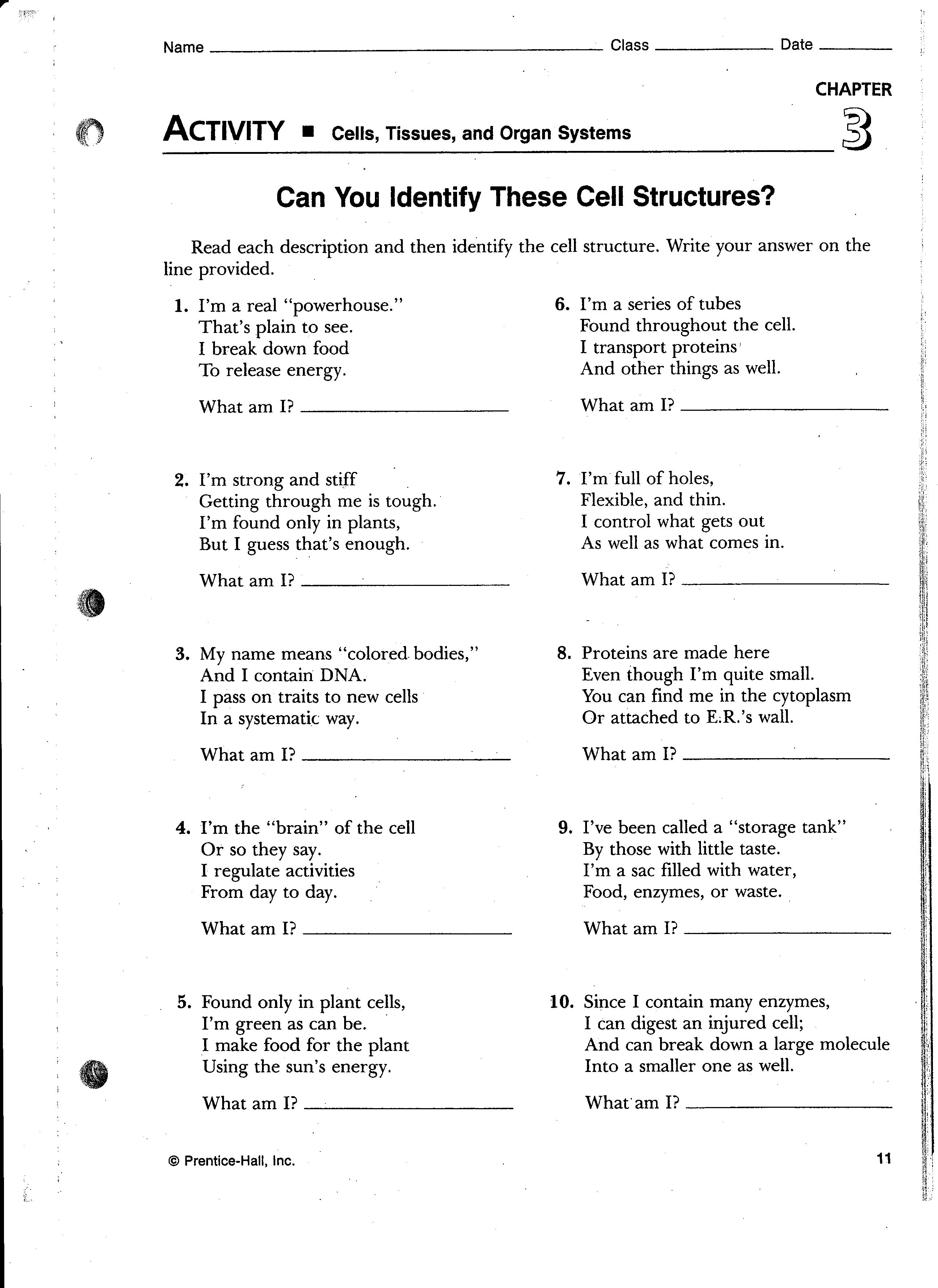
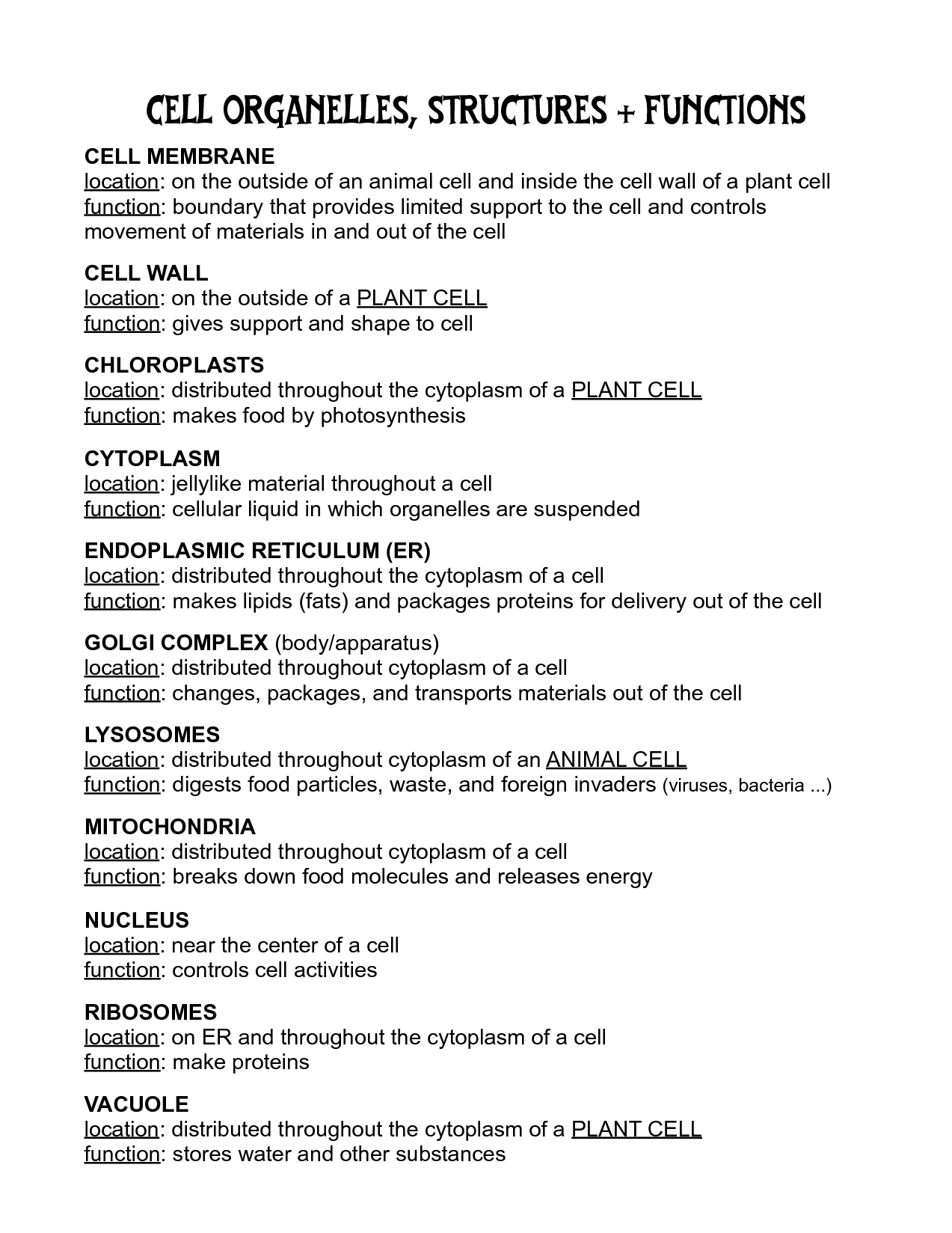
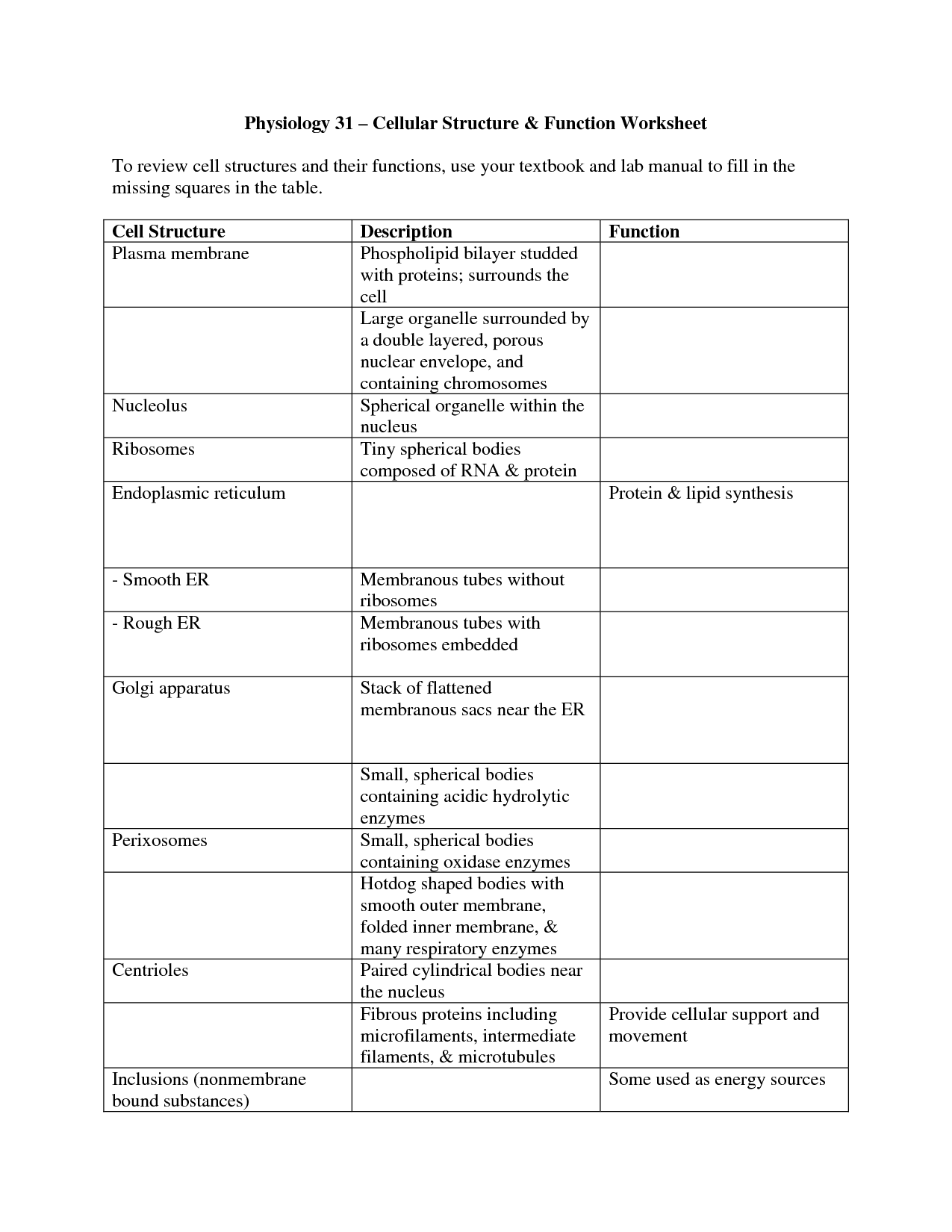
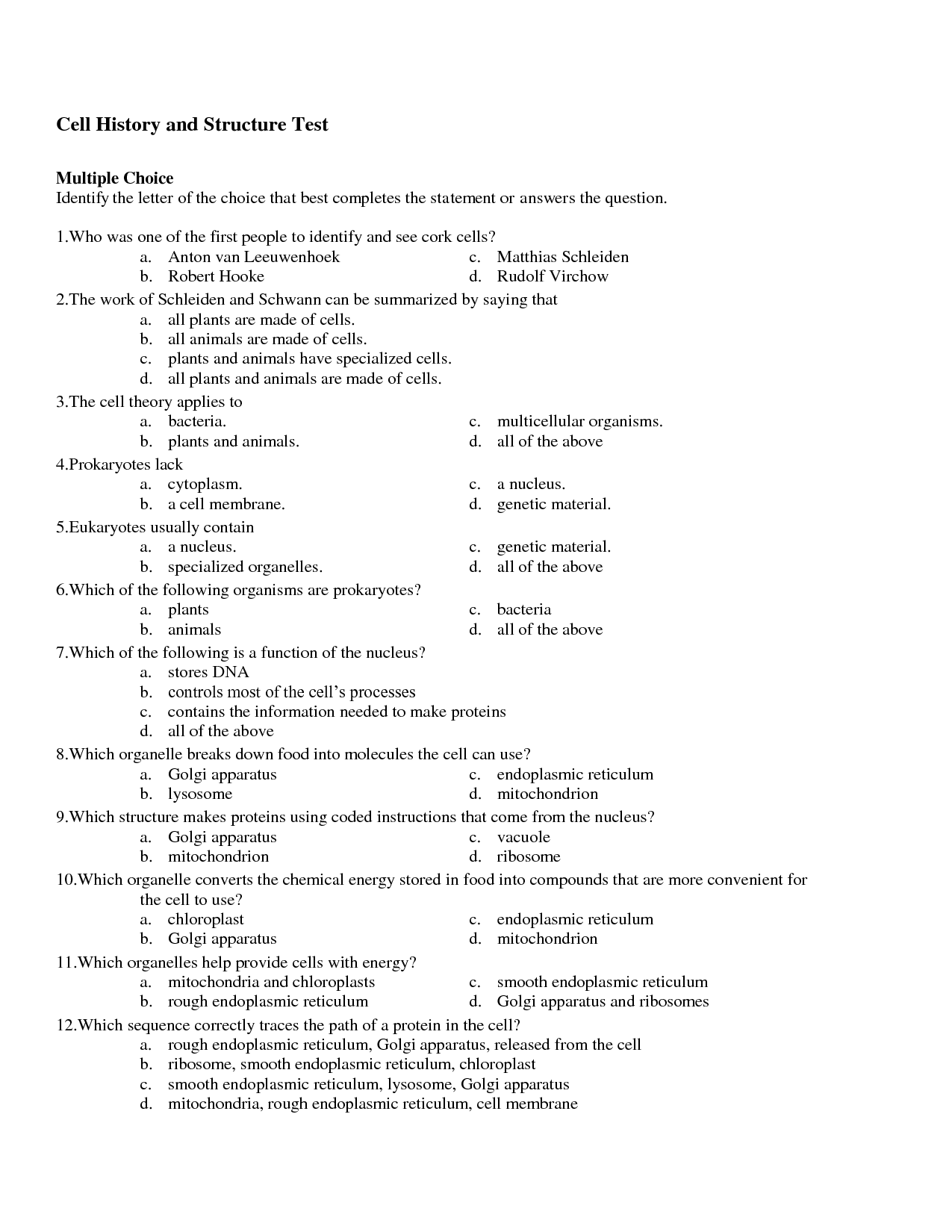














Comments